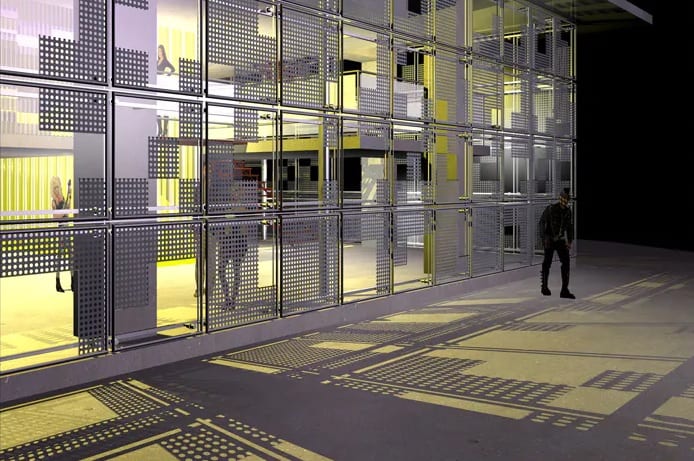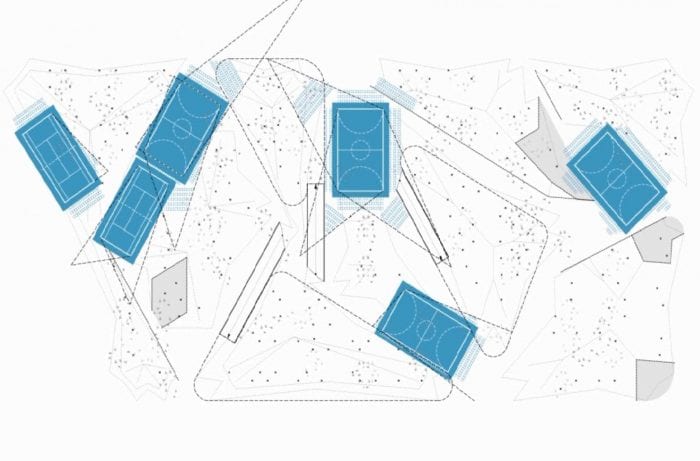School of Architecture
Master of Science in Architecture
One-Year STEM Program
More than ever, architecture needs to be understood as part of an ever-expanding set of aesthetic, social, and technical systems. The Master of Science in Architecture (MSArch) is a one-year/three-semester STEM-designated program that invites architects and non-architects to explore this expanded zone of interdisciplinary practice. Each student chooses an area of concentration that allows them to build expertise in a specific system of thought and technique.
The program is eligible for the STEM OPT Extension for F-1 visa holders.
MSArch is a STEM program. Learn more about STEM at Woodbury.
Apply Request Information Take a TourRecent MSArch Research Projects
Rainwater Harvesting
Alumna Stephanie Newcomb (MSArch ’16) researched water commoning and rainwater harvesting to create a new method of urban water stewardship. Her project, called Coopelluvia, examined how stormwater will form an important part of Los Angeles’ future water portfolio.
Public Space & Mobility
Cyrus Dorbayan (MSArch ’15) created a proposal for dynamic city centers to promote the ‘people streets’ model and pair it with innovative programming and interactive architectural events. The research aimed to enable organizations to provide beautiful, useful, and viable public spaces that will benefit their community.
Landscape Urbanism
Arturo Tovar (MSArch ’14) researched the natural landscape of Los Cabos, Mexico and how it is characterized by the lack of integration with the natural landscape, as seen in the city itself. The new development integrated local program and tourism by following the existing natural context.
Infrastructure
Systematic Infiltration was a research project by Berlie Damiani (MSArch ’11) that investigated the relationship between city zoning and development. The project explored zoning by site and a project anticipated impact, rather than zoning by use.
Adaptive Reuse & Transportation
Duc Le (MSArch ’12) explored the condition of excess surface parking in downtown Los Angeles through the research project Animating Residual Surfaces. His work looked at adaptive reuse through the lens of infrastructure and open space.
Social Impact Design
Aja Bulla Richards (MSArch ’15) created a thesis project with the Arid Lands Institute that won a Great Streets Grant from the city of Los Angeles. “Connect the Dots” uses art and design to shape policy and create inspired public spaces for a water-smart future.
Who we want
- Recent graduates of architecture programs who want to sharpen their focus prior to a professional career.
- Graduates of non-architecture programs who want to develop the architectural aspects of their work.
- Early- to mid-career professionals who want to develop a specific area of expertise.
How it Works
During the application process, students identify an area of concentration and a primary advisor within that area. Once enrolled, each student works closely with the advisor in a small seminar/studio format to define the project and conduct research. This work is supported by a series of elective courses. In their final semester, students produce a thesis project that gives concrete form to their investigation, whether as a publishable article, exhibition, or prototype. At the end of their one-year course of study, students will have produced a personal project that will sustain and energize their future careers, whether as designers, artists, filmmakers, game designers, entrepreneurs, or scholars.
Students in the MSArch program have full access to the resources offered by Woodbury’s design, media, and business programs, such as our virtual reality facilities, gallery and exhibition spaces, game design courses, and digital fabrication labs. Further afield, students are encouraged to use the unique conditions of Southern California as an extended network and laboratory, including local archives and technical expertise from nearby industries.
Applying
You can apply to the Master of Science program through the Office of Admissions.
Your application must include:
• A 250-500 word research proposal in which you identify your area of concentration, potential thesis topic, and which faculty members might serve as your advisors.
• Two letters of reference from former faculty or employers
• Official transcripts from all institutions of higher education attended
• TOEFL scores (minimum score of 80) or IELTS scores (minimum score of 6.5) for international applicants only
Please feel free to contact the Admissions Office or the Program Director at the address shown below for more information.





